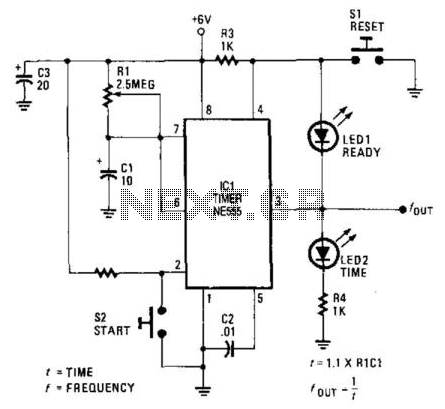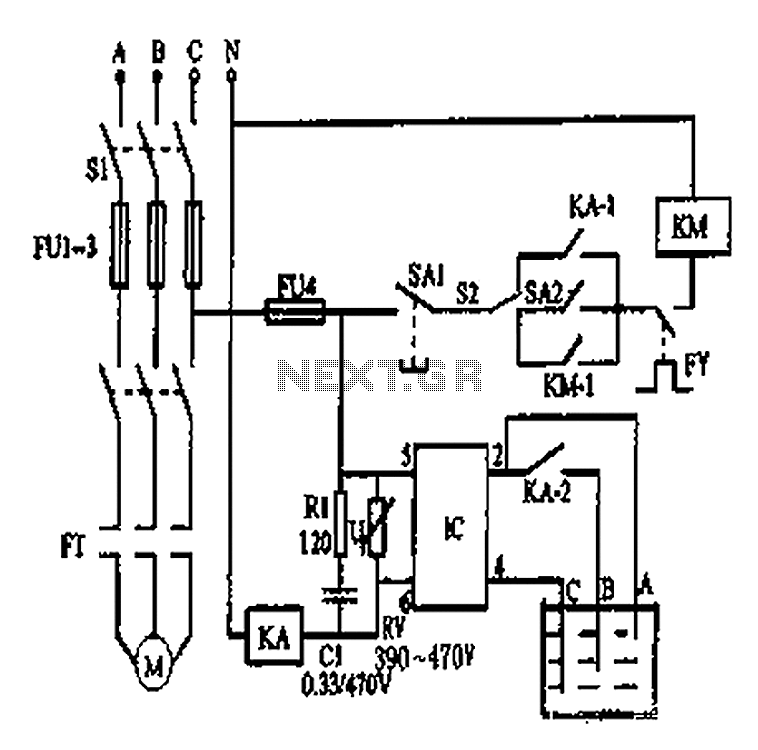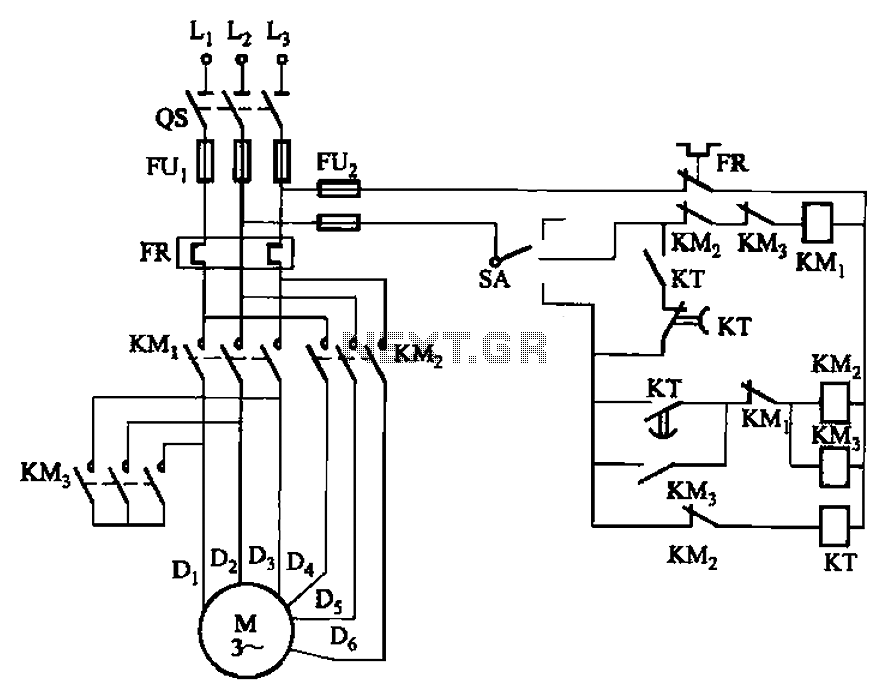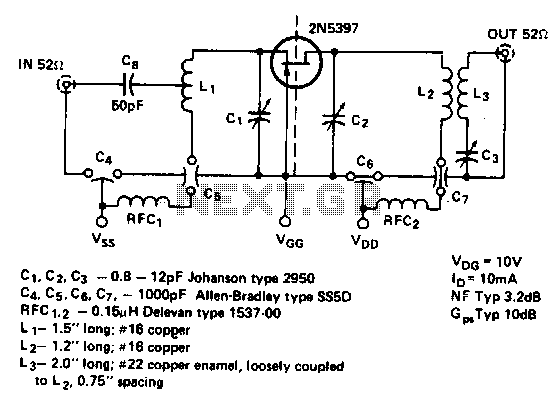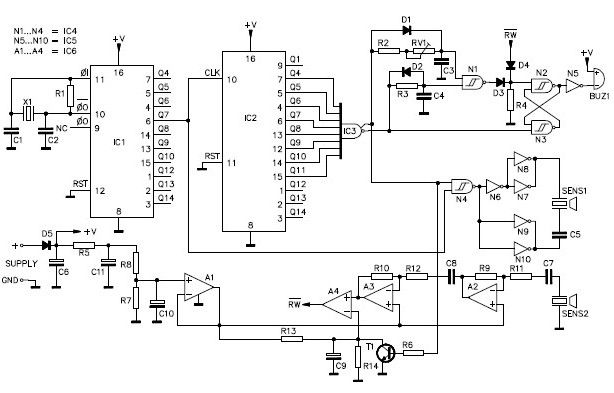
Amplifier Timer Circuit

This circuit turns off an amplifier or any other device when a low-level audio signal fed to its input is absent for at least 15 minutes. By pressing P1, the device is powered on, supplying power to any appliance connected to SK1. The input audio signal is amplified and squared by IC2A and IC2B, and its status is indicated by LED D4. When D4 lights up, even briefly, IC3 is reset and begins counting again.
The described circuit operates as an audio signal monitoring and control system designed to manage power to connected devices based on the presence of an audio signal. The core components include operational amplifiers, a timer IC, and a visual indicator.
The input audio signal is first processed by operational amplifiers IC2A and IC2B, which serve to boost the signal amplitude and convert it into a square wave. This transformation is essential for reliable detection of the audio signal's presence. The squaring process also helps in minimizing noise interference, ensuring that the circuit only responds to valid audio signals.
LED D4 acts as a visual feedback mechanism, illuminating when the audio signal is detected. This feature allows users to easily monitor the circuit's operational status. The LED's brief illumination indicates that the audio signal has been present recently, triggering the reset mechanism of timer IC3. This timer is critical for the circuit's functionality, as it counts the duration of the absence of the audio signal.
When the audio signal is not detected for a continuous period of 15 minutes, the timer IC3 reaches its threshold, leading to the deactivation of the output. This action effectively turns off the power supply to the connected appliance at SK1, preventing unnecessary energy consumption and potential overheating of devices.
The circuit also includes a manual reset option via push button P1, allowing users to turn the device back on at any time, regardless of the audio signal status. This feature adds flexibility, enabling the system to be used in various applications where audio signals may be intermittent.
In summary, this circuit combines audio signal detection, timing, and control functionalities to efficiently manage power to connected devices, ensuring they remain operational only when needed based on audio activity.This circuit turns-off an amplifier or any other device when a low level audio signal fed to its input is absent for 15 minutes at least. Pushing P1 the device is switched-on feeding any appliance connected to SK1. Input audio signal is boosted and squared by IC2A & IC2B and monitored by LED D4. When D4 illuminates, albeit for a very short peak, IC3 is reset and restarts its counting.. 🔗 External reference
The described circuit operates as an audio signal monitoring and control system designed to manage power to connected devices based on the presence of an audio signal. The core components include operational amplifiers, a timer IC, and a visual indicator.
The input audio signal is first processed by operational amplifiers IC2A and IC2B, which serve to boost the signal amplitude and convert it into a square wave. This transformation is essential for reliable detection of the audio signal's presence. The squaring process also helps in minimizing noise interference, ensuring that the circuit only responds to valid audio signals.
LED D4 acts as a visual feedback mechanism, illuminating when the audio signal is detected. This feature allows users to easily monitor the circuit's operational status. The LED's brief illumination indicates that the audio signal has been present recently, triggering the reset mechanism of timer IC3. This timer is critical for the circuit's functionality, as it counts the duration of the absence of the audio signal.
When the audio signal is not detected for a continuous period of 15 minutes, the timer IC3 reaches its threshold, leading to the deactivation of the output. This action effectively turns off the power supply to the connected appliance at SK1, preventing unnecessary energy consumption and potential overheating of devices.
The circuit also includes a manual reset option via push button P1, allowing users to turn the device back on at any time, regardless of the audio signal status. This feature adds flexibility, enabling the system to be used in various applications where audio signals may be intermittent.
In summary, this circuit combines audio signal detection, timing, and control functionalities to efficiently manage power to connected devices, ensuring they remain operational only when needed based on audio activity.This circuit turns-off an amplifier or any other device when a low level audio signal fed to its input is absent for 15 minutes at least. Pushing P1 the device is switched-on feeding any appliance connected to SK1. Input audio signal is boosted and squared by IC2A & IC2B and monitored by LED D4. When D4 illuminates, albeit for a very short peak, IC3 is reset and restarts its counting.. 🔗 External reference

